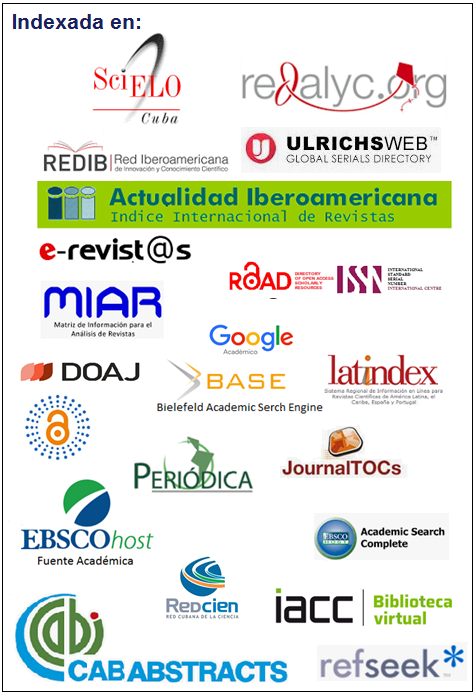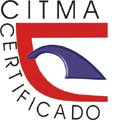Potential use of hot springs in the Namibe province, Angola: Preliminary physical-chemical findings
Keywords:
aguas termales, parámetros físico-químicos, Tipa, Ndolondolo, NamibeAbstract
Angola is a country rich in natural resources, including extensive hydric sources, with particular emphasis on groundwater as a hydrothermal resource. The province of Namibe, on the Southwest coast of Angola, has several thermal springs, such as Montipa, Ndolondolo, Pediva, Sayona, and Tipa. These sources can provide water for human consumption, agriculture, tourism and therapeutic purposes. A study to determine the characteristics and quality of the thermal waters from the Ndolondolo and Tipa, aimed to physically and chemically characterize the water of these two thermal springs. The organoleptic parameters (colour, odour, and taste) and physicochemical parameters turbidity, electrical conductivity (EC), total dissolved solids (TDS), pH, temperature, iron, nitrogen, and dissolved oxygen (DO) to achieve the designed objectives. Water samples (in the summer and winter), analyses of the Water Treatment Plant (ETA) and Wastewater Treatment Plant (ETAR) of the Provincial Water and Sanitation Company of Namibe (EPASN) and the Water and Sanitation Company of Huíla (EPASH). The Tipa thermal water is sulfuric, slightly basic, and mesothermal, as it emerges at an average temperature of 40.35°C. At the same time, that of Ndolondolo emerges at 37.60°C, being mesothermal of telluric origin, alkaline, slightly salty, and mescaline. The values found in both waters, according to the World Health Organization (WHO), can be suitable for human consumption with proper treatment. Can also be used for agricultural irrigation, animal watering, and recreational purposes. Both thermal waters are mesothermal, of telluric or meteoric origin, mescaline, and alkaline, although the Tipa thermal water is sulphurous.Downloads
References
Abel, M. K. (2018). Caracterização química das águas termais da Montipa. (Trabalho de graduação em engenharia ambiental, Escola Superior Politécnica do Namibe-Universidade Mandume ya Ndemufayo. Angola).
Aguiar, A. (1934). Contribuição ao estudo da hidrominerologia medicinal de Angola. Revista de Química Pura e Aplicada, III Série, 9 (XXIV).
AMC (Administração Municipal do Virei). (2019). Memorando sobre a situação socioeconómica do município do Camucuio.
American Public Health Association. (APHA). (2017). Standard methods for the examination of water & wastewater (23rd ed.). American Public Health Association. http://www.standardmethods.org/store/.
Andueza, F., Chaucala, S., Vinueza, R., Escobar, S., Medina-Ramírez, G. & Araque, J. (2020). Calidad microbiológica de las aguas termales del balneario “El Tingo”. Pichincha. Ecuador. Ars Pharmaceutica, 61(1), 15-23. http://dx.doi.org/10.30827/ars.v61i1.8378.
Cacciapuoti, S., Luciano, M. A., Megna, M., Annunziata M. C., Napolitano, M., Patruno, C., Scala, E., Colicchio, R., Pagliuca, C., Salvatore, P. & Fabbrocini, G. (2020). The Role of Thermal Water in Chronic Skin Diseases Management: A Review of the Literature. Journal of Clinical Medicine. Medicine, 9, 3047. http://doi.org/10.3390/jcm9093047.
Cachapa, A. F., Patatas, T. J. P. A. (2021). Preservação e valorização do património natural e científico de Angola: águas termais da Montipa, Namibe. South Florida Journal of Development, 2(2), 3622-3634. ISSN 2675-5459. https://doi.org/10.46932/sfjdv2n2-197.
Cortez, J. A. S. (2012). Noções elementares de Hidrogeologia. Cap. V do livro Águas Minerais Naturais e de Nascente da Região Centro. Coordenador José A. Simões Cortez, Ed. Mare Liberum, FEDRAVE, Aveiro. ISBN: 978-972-8046-17-0.
Cunha, A. R., Martins, D. (2009). Classificação climática para os municípios de Botucatu e São Manuel, SP. Irriga, 14(1), 1-11.
Decreto Presidencial 261/11 de 6 de Outubro do Ministério de Energia e Águas. Diário da República de Angola. Iª serie. Nº 193.
Diegues, P. & Martins, V. (2010). Águas termais - riscos e benefícios para a saúde. Direção-Geral da Saúde.
DNA (Direcção Nacional de Água) (2005, Março). Avaliação Rápida dos Recursos Hídricos e Uso da Água em Angola. Relatório Final, Projecto de Gestão do Sector Nacional das Águas, Actividade C. República da Angola: Ministério de Energia e Águas.
Domingos, L. N. O. (2019). Avaliação Microbiológica da Água Termal da Montipa-Bibala. (Trabalho de graduação em Engenharia Ambiental. Escola Superior Politécnica do Namibe-Universidade Mandume ya Ndemufayo. Angola).
Farhat, N., Husain, S., Faisal, F., Batool, I., Noreen, M. (2021). Physico-chemical characteristics and therapeutic potential of Chutrun thermal spring in Shigar Balley, Gilgit-Baltistan (Pakistan). Applied Water Science, 11-19. https://doi.org/10.1007/s13201-020-01354-5.
Farhat, N., Hussain, S., Nazir, K., Riaz, M. (2020). Physicochemical Nature and Therapeutic Potential of Thermal Springs: An Overview. Pak. J. Anal. Environ. Chem., 21(1), 01–09. http://doi.org/10.21743/pjaec/2020.06.01.
Feitosa, A. C., Filho, J. M., Feitosa, E. C., Demetrio, J. G. (2008). Hidrogeología, conceitos e aplicações. CPRM - Serviço Geológico do Brasil, 3ª Ed.
Freddo, V. J. F. (2018). Qualidade das águas subterráneas rasas do aquifero Barreiras: Estudo de caso em Benevides. PA. (Dissertação de mestrado, Universidade Federal do Pará. Belém. Brasil).
Gambari. L., Grigolo, B., Filardo, G., Grassi, F. (2020). Sulfurous thermal waters stimulate the osteogenic differentiation of human mesenchymal stromal cells – An in vitro study. Biomedicine & Pharmacotherapy, 129, 110344. https://doi.org/10.1016/j.biopha.2020.110344.
Hategekimana, F., Mugerwa, T., Nsengiyumva, C., Byiringiro, F. V. and Rwatangabo, D. E. R. (2022). Geochemical Characterization of Nyamyumba Hot Springs, Northwest Rwanda. Applied Chem, 2, 247–258. https://doi.org/10.3390/appliedchem2040017.
Larraiza, L. (2016). Clasificación de las aguas termales. Acessado agosto de 2020. http://leirelarraiza.com/operativa/clasificacion-de-las-aguas-termales/.
McNeely, R., Neimanis, P. & Dwyer, L. (1979). Water Quality Source book: A Guide to Water Quality Parameters. Ottawa: Environmental Canada Publications.
Navarro-García, J. R. (2013). Estudios sobre el agua en España: Recursos documentales y bibliográficos. El Colegio de Michoacán: Escuela de Estudios Hispanoamericanos, CSIC. Zamora, Michoacán. México. ISBN 978-607-8257-32-4.
Organización Mundial de la Salud (OMS) (2011). Guías para la calidad del agua de consumo humano. Cuarta edición que incorpora la primera adenda. Ginebra. ISBN 978-92-4- 354995-8.
Pascual, E. G. (2017). Aguas mineromedicinales de Mallorca. (Tesis Doctoral en Medicina, Universidad de Alcalá. Madrid. España).
Pinuaga-Espejel, J. I. (1998). Infraestructura Hidrotermal. Jornadas de aguas minerales y mineros medicinales en España. Ed. Instituto Tecnológico GeoMinero de España. Madrid.
Piveli, R. P. & Kato, M. T. (2006). Qualidade das Águas e Poluição: Aspectos Físico-Químicos. São Paulo/SP: ABES - Associação Brasileira de Engenharia Sanitária e Ambiental, 01.
Reyes, G. (2015). Proyecto Estudio de la caracterización fisicoquímica Microbiológica de aguas y lodos de pozos termales existentes en el país: validación de resultados finales de la caracterización fisicoquímica de 6 termales colombianos para su uso terapeútico. Venezuela.
Santos, A. (2011). Propriedades e aplicações dermatológicas das águas termais. Porto: Universidade Fernando Pessoa. Cessado 30 de Julho de 2019. http://bdigital.ufp.pt/bitstream/10284/2438/3/MONOGRAFIA.pdf.
Sherpa, M. T., Das, S., Thakur, N. (2013). Physicochemical analysis of hot water springs of Sikkim-Polok Tatopono, Borong Tatoponi and Reshi Tatoponi. Recent Research in Science and Technology, 5(1), 63-67. ISSN: 2076-5061.
Szikszay, M. (1993). Geoquímica das águas. São Paulo: Universidade de São Paulo. http://dx.doi.org/10.11606/issn.2316-896X.v0i5p1-166.
Tiago, E. (2017). Caracterização físicas das águas termais da Montipa. (Trabalho de graduação em Engenharia Ambiental, Escola Superior Politécnica do Namibe-Universidade Mandume ya Ndemufayo. Angola).
United Nations (UN). (2022). The Sustainable Development Goals Report 2022. https://unstats.un.org/sdgs/report/2022/The-Sustainable-Development-Goals-Report-2022.pdf.
Upton, K. Ó., Dochartaigh, B. É., Bellwood-Howard, I., González, M. A. (2018). Africa Groundwater Atlas: Hydrogeology of Angola. British Geological Survey. http://earthwise.bgs.ac.uk/index.php/Hidrogeologia_de_Angola.
Vasconcelos, A. V. M. (2017). Hidrogeologia de águas termais. Um caso de estudo em Portugal. (Dissertação de Mestre em Engenharia de Minas e Geo-Ambiente, Faculdade de Engenharia da Universidade do Porto).
Vásquez, C. A. R. (2017). Caracterización de aguas termales mediante análisis fisicoquímico en el caserío de Chotén-distrito de San Juan. (Título Profesional de Ingeniero Geólogo, Universidad Nacional de Cajamarca. Colombia).
Waring, G. A. (1965). Thermal springs of United States and the other countries of the world. A summary. Washington: United States Government Printing Office.
Published
How to Cite
Issue
Section
Copyright (c) 2024 José Alberto Pons Herrera

This work is licensed under a Creative Commons Attribution-NonCommercial 4.0 International License.
- Authors retain copyright and guaranteeing the right magazine to be the first publication of the work as licensed under a Creative Commons Attribution-NonCommercial that allows others to share the work with an acknowledgment of the work's authorship and initial publication in this journal.
- Authors may establish separate supplemental agreements for the exclusive distribution version of the work published in the journal (eg, place it in an institutional repository or publish it in a book), with an acknowledgment of its initial publication in this journal.
- Authors are allowed and recommended to disseminate their work through the Internet (e.g., in institutional telematic archives or on their websites) before and during the submission process, which can produce interesting exchanges and increase citations of the published work. (See The effect of open access)




